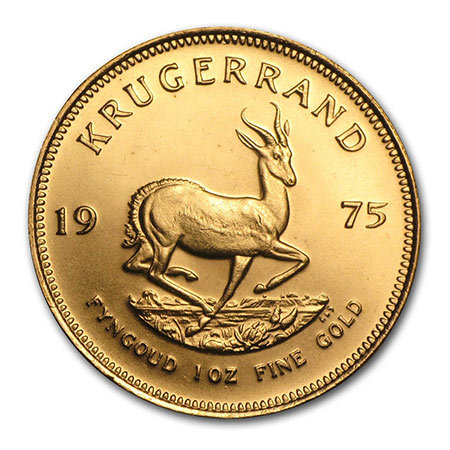
Kruggerand Coins
Krugerrands are one of the most well known gold bullion coins in the World. In Europe, they are more famous than US Gold Eagles.
Krugerrands are 8.33% copper and 91.67% gold. As with the US Gold Eagles, Krugerrands come in four sizes, yet the fractional ounce Krugerrands are not generally accessible. More gold Krugerrands have been minted than all other types of gold bullion coins together, with in most accounts 42 million having been stamped following 1967. A large bulk of Krugerrands were minted in the 1970s and mid-1980s to take care of the demand as gold bullion purchasers ran to gold coins as insurance against rapid world inflation.
Minted in South Africa, the Krugerrand was initially foreign to the United States investor initially after Americans recovered the privilege to purchase and own gold bullion on December 31, 1974. The hurry to purchase gold was on, and these gold bullion coins turned into an instant hit with gold purchasers. Today the Krugerrand remains one of the best gold bullion coins minted for trading in.
Krugerrands come in four sizes: 1/10-ounce, 1/4-ounce, 1/2-ounce, and 1-ounce. Every one of the four gold coins convey the same configuration. 1-oz Krugerrands are by a wide margin the most well-known and by and large can be found in vast amounts. The partial ounce Krugerrands are not as easily accessible, but rather when fractional ounce Krugerrands are accessible they are altogether lower estimated than fractional ounce US Gold Eagles, which come in the same four sizes.
Krugerrands make up the most dynamic gold market of all present day gold bullion coins, with thousands changing hands every day. Most Krugerrand requests are loaded with blended dated coins. Every so often tubes do come to market with Krugerrands dated that same year.
On the other hand, in 1985, in light of the fact that the South African government was white-ruled, The United States Congress passed a bill that disallowed South Africa from offering Krugerrands in the United States. By then, however, an expected 22 million had as of that date been imported, and the boycott did not influence the purchasing and offering Krugerrands that were at that point in the United States. Today a dynamic business continues for Krugerrands, and thousands exchange hands every day.

